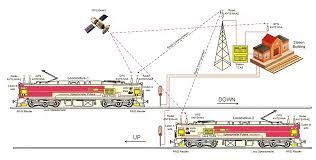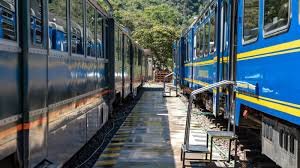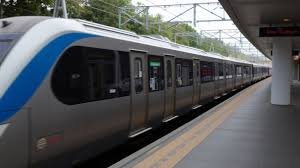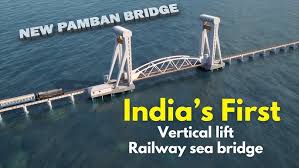Kavach: India’s Pledge to Safer Railways
Introduction to Kavach
India’s railways are about to experience a significant transformation with the introduction of the Kavach Automatic Train Protection (ATP) system. This initiative will cover the entire railway network within the next six years, as confirmed by Union Minister Ashwini Vaishnaw. Kavach aims to reduce train accidents and ensure a higher level of safety for millions of passengers traveling across the country.
What is Kavach?
Kavach, meaning “shield” in Hindi, is an indigenously developed Automatic Train Protection (ATP) system. Its primary function is to prevent train collisions by automatically applying brakes if a train exceeds the speed limit or approaches a signal at danger. Kavach has earned the Safety Integrity Level (SIL-4) certification, making it one of the most reliable safety systems in the world.
Implementation Plan
The Kavach system is set to be fully deployed within six years, with the government making significant investments in this project. A large portion of the ₹2.65 lakh crore allocated for railway development in the fiscal year 2025-26 will support this safety initiative. The deployment will be done through public-private partnerships, allowing the integration of cutting-edge technologies while ensuring government control.
Technological Upgrades
The latest version, Kavach 4.0, launched in 2024, improves on earlier models by enhancing location accuracy and adapting to different environmental conditions, such as fog and heavy rains, which often disrupt train services. The updated version ensures that trains can operate safely in these challenging conditions.
Manufacturers Behind Kavach
Leading Indian companies, such as Medha Servo Drives, HBL Power Systems, and Kernex Microsystems, are responsible for manufacturing Kavach, while RailTel and Quadrant FutureTek manage the technology. The system has been cleared for use by the Research Designs & Standards Organisation (RDSO).

Why this News is Important
Ensuring Safer Rail Travel
The introduction of Kavach is a critical step toward improving railway safety. India’s vast rail network, which ferries millions of passengers every day, has long been plagued by accidents. By preventing collisions through automatic braking, Kavach promises to save lives and significantly reduce human errors. It reflects the government’s commitment to modernizing the railway infrastructure and enhancing passenger safety.
Boosting Global Competitiveness
By integrating such a high-tech system, India is setting a global standard for railway safety. The success of the Kavach system could make it an example for other countries with large rail networks, enhancing India’s reputation for innovation and technological advancement.
Fostering Technological Innovation
Kavach’s development and deployment highlight India’s focus on indigenous technology solutions. It showcases the country’s growing capabilities in advanced safety systems and the potential for more such innovations in critical infrastructure sectors.
Historical Context
Rail Safety in India
India’s railway system, one of the largest in the world, has been prone to accidents over the years, despite efforts to improve safety. Various measures have been taken, including the introduction of signal systems and better track maintenance. However, the Kavach system represents a leap forward in integrating cutting-edge technology to ensure safety, making human error less likely.
Previous Safety Measures
In the past, the railway network relied on manual signals and human oversight for safety. The advent of technology like Kavach marks a shift towards automation in the sector, enabling quicker responses to emergencies and reducing the chance of accidents.
Key Takeaways from “Kavach: India’s Pledge to Safer Railways”
| S.No. | Key Takeaway |
|---|---|
| 1 | Kavach is an Automatic Train Protection system designed to prevent train collisions by applying automatic brakes. |
| 2 | The system has earned Safety Integrity Level (SIL-4) certification, ensuring high reliability and reducing human error. |
| 3 | The government plans to roll out the Kavach system across India’s entire railway network within six years. |
| 4 | Kavach 4.0, approved in 2024, offers enhanced location accuracy and is designed to function in diverse environmental conditions. |
| 5 | The project is backed by a ₹2.65 lakh crore budget allocation for the railway sector for fiscal year 2025-26. |
Important FAQs for Students from this News
1. What is Kavach?
Kavach is an Automatic Train Protection (ATP) system developed by India to ensure train safety by automatically applying brakes in case of overspeeding or approaching a danger signal.
2. Why is Kavach important?
Kavach aims to reduce train accidents and human errors, ensuring safer travel for millions of passengers and improving overall railway safety standards.
3. Which organizations are responsible for manufacturing Kavach?
Kavach is manufactured by companies like Medha Servo Drives, HBL Power Systems, and Kernex Microsystems, while RailTel and Quadrant FutureTek manage the technology behind it.
4. What does Safety Integrity Level (SIL-4) certification mean for Kavach?
The SIL-4 certification ensures that Kavach meets the highest international safety standards, making it one of the most reliable automatic train safety systems.
5. How long will it take for Kavach to be implemented nationwide?
The Kavach system is expected to be deployed across India’s entire railway network within the next six years, as part of an ongoing modernization initiative.
Some Important Current Affairs Links


















